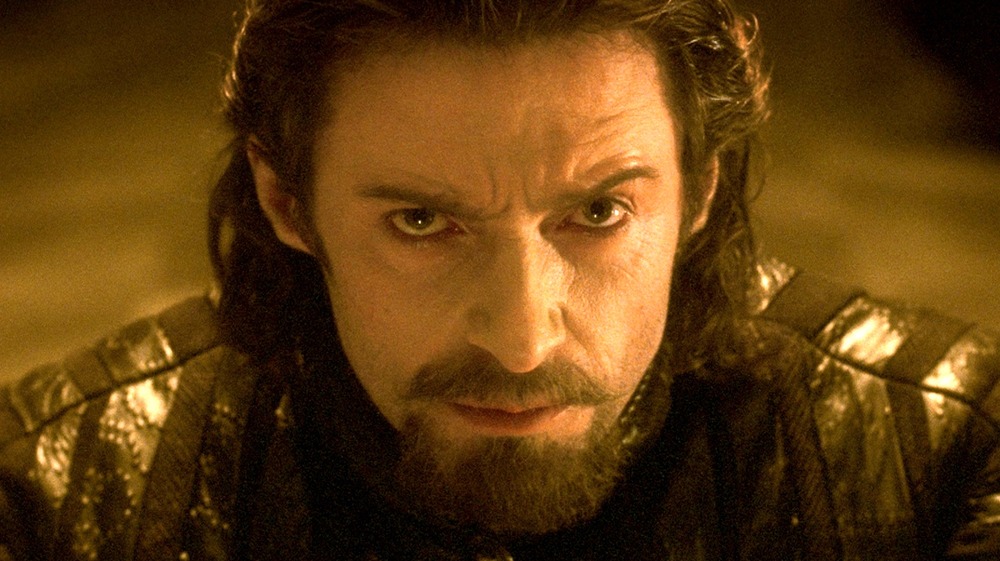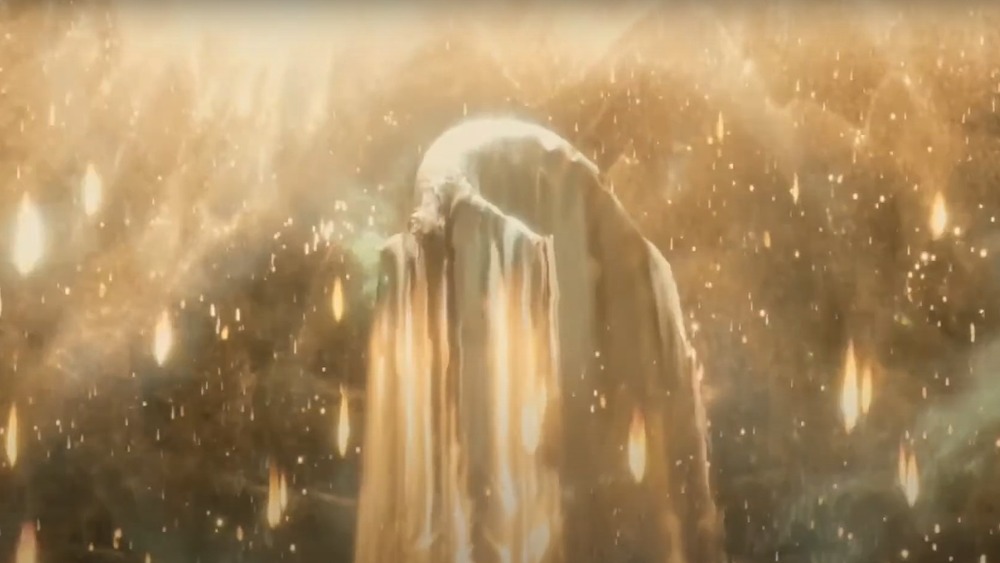The Ending Of The Fountain Explained
The Fountain has all the earmarks of a Darren Aronofsky movie, from the bold color palette to the haunting Clint Mansell score to the female lead who's disappointed with her romantic partner for being too obsessed with work. Plenty has been said about the film in the 15 years since it came out. Rachel Weisz claimed that she wept when she finished the script for the first time. Hugh Jackman called it "the most challenging thing" he'd ever read — in his defense, Movie 43 wouldn't come out until seven years later.
Like a lot of Aronofsky's work, it's a story that isn't spelled out for its audience, and the ending is open to interpretation. Audiences are introduced to three separate instances of the same characters: a conquistador and his queen, a medical researcher and his dying wife, a lonely astronaut and his personified grief. Which versions of the couple are meant to be taken as literal and which ones are allegorical? That's very much up to you.
The easy answer goes like this: In the present, Izzi (Weisz), a young woman in the final days of her life thanks to a brain tumor, writes a fable — the story of a 16th-century conquistador searching for the Fountain of Youth in the hopes that he and the woman he loves will live forever. Izzy does this to try to connect with her brilliant but obsessive husband Tom (Jackman), a surgeon struggling to develop a cure for her condition. She sketches out a metaphor for his fixation with saving her through his work. Both the conquistador and the doctor spend their finite time trying to beat death, at the cost of being with the person they care about the most.
The book, which Izzi titles "The Fountain," only starts in the 1500s. "It ends up there," she explains, looking to the stars.
In The Fountain, death is the road to "huh?"
The Fountain's third segment takes place in the depths of space: A ship, occupied by a bald, seemingly ageless Tom, hurtles toward the nebula that his wife once pointed out. This Tom is haunted by visions of his last days with Izzi, reliving his regrets again and again while he promises his only fellow passenger, a dying tree, that they've almost reached their destination.
It's one of three important trees in the film. The conquistador in Izzi's story finds the Tree of Life and its promise of eternal youth to anyone that drinks its sap. In the present, Tom experiments with an old growth tree that seems to de-age his test subjects.
The most literal translation of events sees Tom losing Izzi in the modern world, tasked with filling in the final passages of her unfinished book. It could be that the story of the astronaut, flying into a nebula and haunted by guilt, is just the narrative he constructs to finish his wife's story. Maybe the fact that Izzi called her book "The Fountain" points to the idea that the memories we leave behind are as close to immortality as we're supposed to get. The pieces are there for that to be true.
If you'd prefer, it's all a continuing story — the acorn that Tom plants on Izzi's grave could be the same tree that he will later take into space in his search for rebirth, the same sort of tree that he used to defeat the aging process. It could be that his obsession carried into the next few centuries, and he carried his wife's remains into the Mayan afterlife, either symbolized by or literally inside of the Xibalba nebula. Maybe the conquistador's story was real, too, and his death was actually a moment of recreation, followed by hundreds of years spent with the Queen until her death in the modern era.
Maybe mother! is just a movie about a guy whose killjoy wife won't let him invite his friends over. Aronofsky movies are hard.

